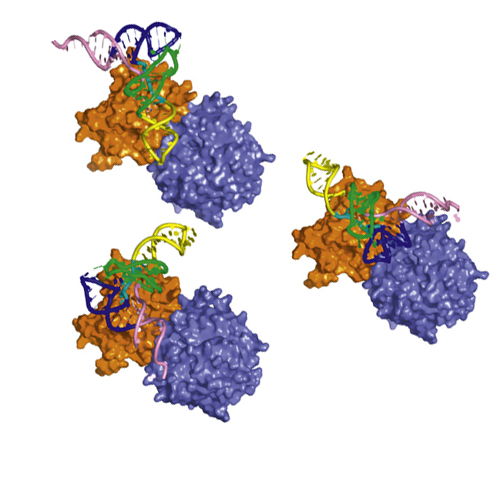Strategies for the structural analysis of multi-protein complexes: Lessons from the 3D-Repertoire project
02-Aug-2011
Journal of Structural Biology, 2011, doi:10.1016/j.jsb.2011.03.018, Volume 175, Issue 2, Pages 147-158 published on 02.08.2011
Structural studies of multi-protein complexes, whether by X-ray diffraction, scattering, NMR spectroscopy or electron microscopy, require stringent quality control of the component samples. The inability to produce ‘keystone’ subunits in a soluble and correctly folded form is a serious impediment to the reconstitution of the complexes. Co-expression of the components offers a valuable alternative to the expression of single proteins as a route to obtain sufficient amounts of the sample of interest. Even in cases where milligram-scale quantities of purified complex of interest become available, there is still no guarantee that good quality crystals can be obtained. At this step, protein engineering of one or more components of the complex is frequently required to improve solubility, yield or the ability to crystallize the sample. Subsequent characterization of these constructs may be performed by solution techniques such as Small Angle X-ray Scattering and Nuclear Magnetic Resonance to identify ‘well behaved’ complexes. Herein, we recount our experiences gained at protein production and complex assembly during the European 3D Repertoire project (3DR). The goal of this consortium was to obtain structural information on multi-protein complexes from yeast by combining crystallography, electron microscopy, NMR and in silico modeling methods. We present here representative set case studies of complexes that were produced and analyzed within the 3DR project. Our experience provides useful insight into strategies that are more generally applicable for structural analysis of protein complexes.











